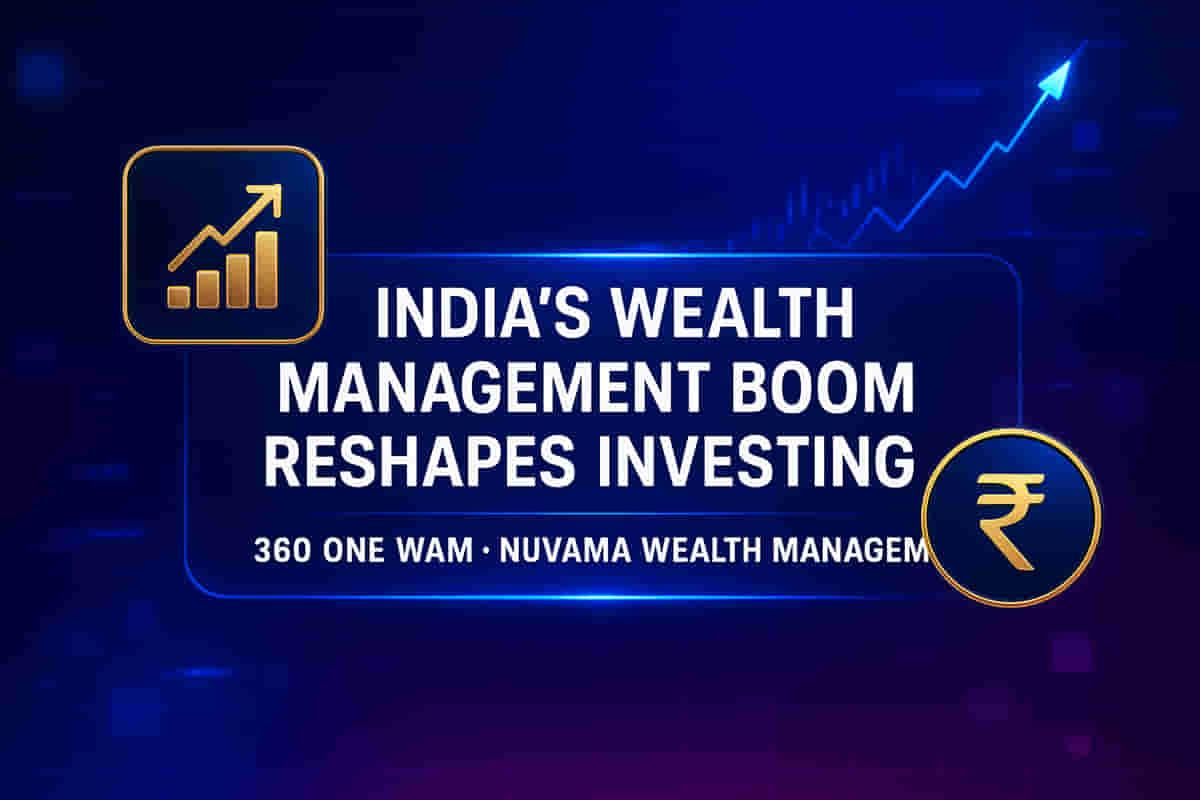India's Wealth Management Boom: Rise of New Financial Powerhouses Driven by Structural Shifts
Banking/Finance
|
31st October 2025, 2:12 AM

▶
Stocks Mentioned :
Short Description :
Detailed Coverage :
India's household wealth, now exceeding Rs 600 trillion, is seeing a growing portion flow into financial products such as mutual funds, portfolio management services (PMS), and alternative investments, diverging from traditional assets like gold and fixed deposits. This migration has elevated wealth managers to prominent roles, serving as crucial advisors to India's affluent population.
Two leading firms in this sector are 360 One Wealth Asset Management (WAM), previously known as IIFL Wealth, and Nuvama Wealth Management. 360 One WAM is India's largest listed wealth and alternates management platform, managing Rs 6.7 trillion in assets as of September 2025. The company has expanded its services to over 8,500 families and corporates. In the September quarter (Q2 FY26), it reported Rs 813 crore in total revenue (up 32%) and Rs 316 crore in profit after tax (up 27.7%), with nearly 70% of its income being recurring, indicating strong stability.
Nuvama Wealth Management, backed by Asia's investment giant PAG, is a diversified financial platform managing US $50.4 billion (Rs 4.3 trillion) in client assets by March 2025. It achieved revenue growth of 41% to US $339 million and a 65% jump in operating profit to US $115 million. Its business model encompasses private wealth, asset management, and asset services, contributing to predictable annuity income.
The wealth boom is driven by several structural factors: a significant gap in mutual fund penetration compared to developed markets, the seamless integration of digital platforms like UPI and Aadhaar, a new generation seeking data-driven advice, and regulatory shifts favoring fee-based advisory models.
Key risks include managing talent retention, as relationship managers are critical, and controlling operational costs while investing in technology. Recent regulatory proposals by SEBI to cap brokerage fees and reduce expense ratios could impact margins, though they may ultimately benefit scaled, advisory-led platforms.
**Impact** This structural shift towards professional wealth management is fundamentally reshaping India's financial services industry. It is creating substantial growth opportunities for firms like 360 One WAM and Nuvama Wealth Management, potentially leading to increased investment in financial markets by a wider segment of the Indian population and signifying greater maturity in the country's financial ecosystem.
Impact Rating: 7/10
**Difficult Terms** * **Mutual Funds**: A professional investment service that pools money from many investors to invest in stocks, bonds, or other securities. * **Portfolio Management Services (PMS)**: A service where a professional money manager manages a client's investment portfolio on a discretionary or non-discretionary basis. * **Alternate Investments**: Investments outside of traditional asset classes like stocks, bonds, and cash, such as private equity, hedge funds, real estate, and commodities. * **Assets Under Management (AUM)**: The total market value of the investments that a financial institution manages on behalf of its clients. * **Annual Recurring Revenue (ARR)**: The predictable revenue a company expects to receive on a recurring basis over a period of time, typically a year. In wealth management, it comes from advisory and management fees. * **Cost-to-Income Ratio (CIR)**: A measure of a financial institution's efficiency, calculated by dividing operating expenses by operating income. A lower ratio indicates higher efficiency. * **Ultra-High-Net-Worth Individuals (UHNI)**: Individuals with a net worth of US $30 million or more (excluding their primary residence). * **Return on Equity (ROE)**: A measure of a company's profitability that calculates how much profit a company generates with the money shareholders have invested. * **Unified Payments Interface (UPI)**: An instant real-time payment system developed by the National Payments Corporation of India (NPCI). * **Aadhaar**: A 12-digit unique identification number issued by the Unique Identification Authority of India (UIDAI) to all residents. * **Account Aggregators**: A framework introduced by the RBI that allows individuals to grant access to their financial data (from banks, insurance companies, etc.) to third-party financial service providers in a secure and consent-based manner. * **Securities and Exchange Board of India (SEBI)**: The statutory body responsible for regulating the securities market in India. * **Total Expense Ratio (TER)**: The annual fee charged by a mutual fund or ETF, expressed as a percentage of the fund's average assets under management.